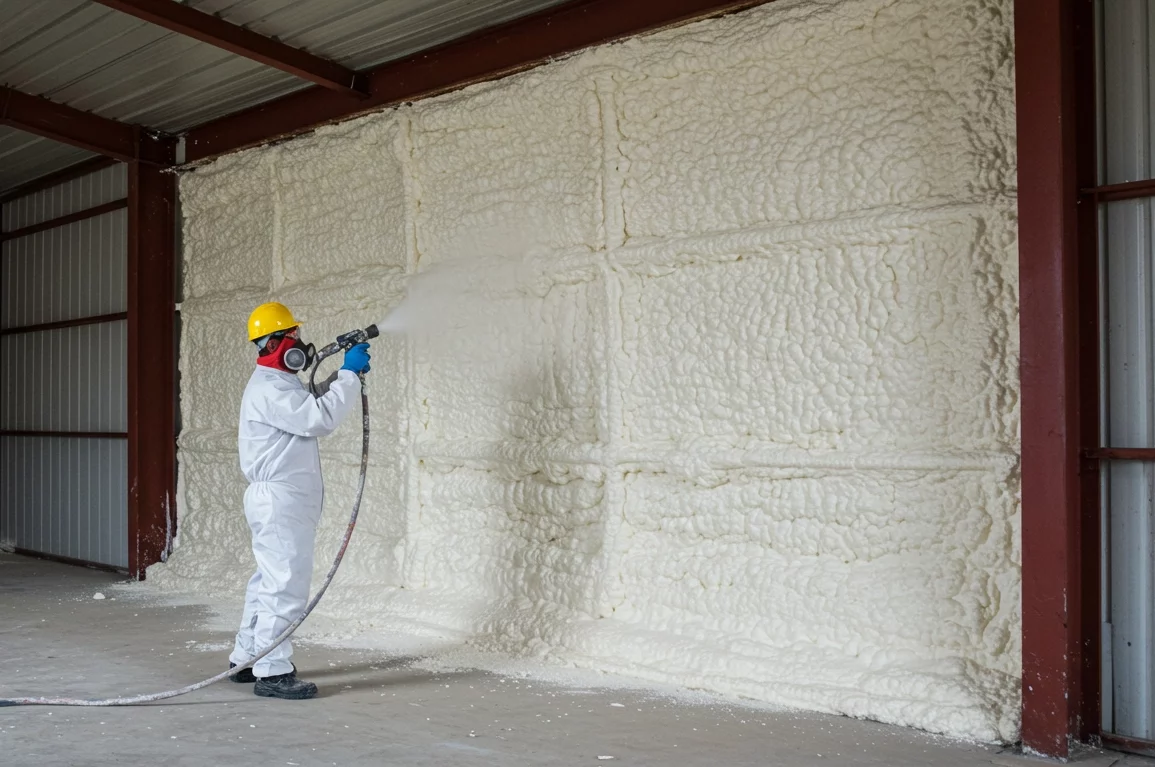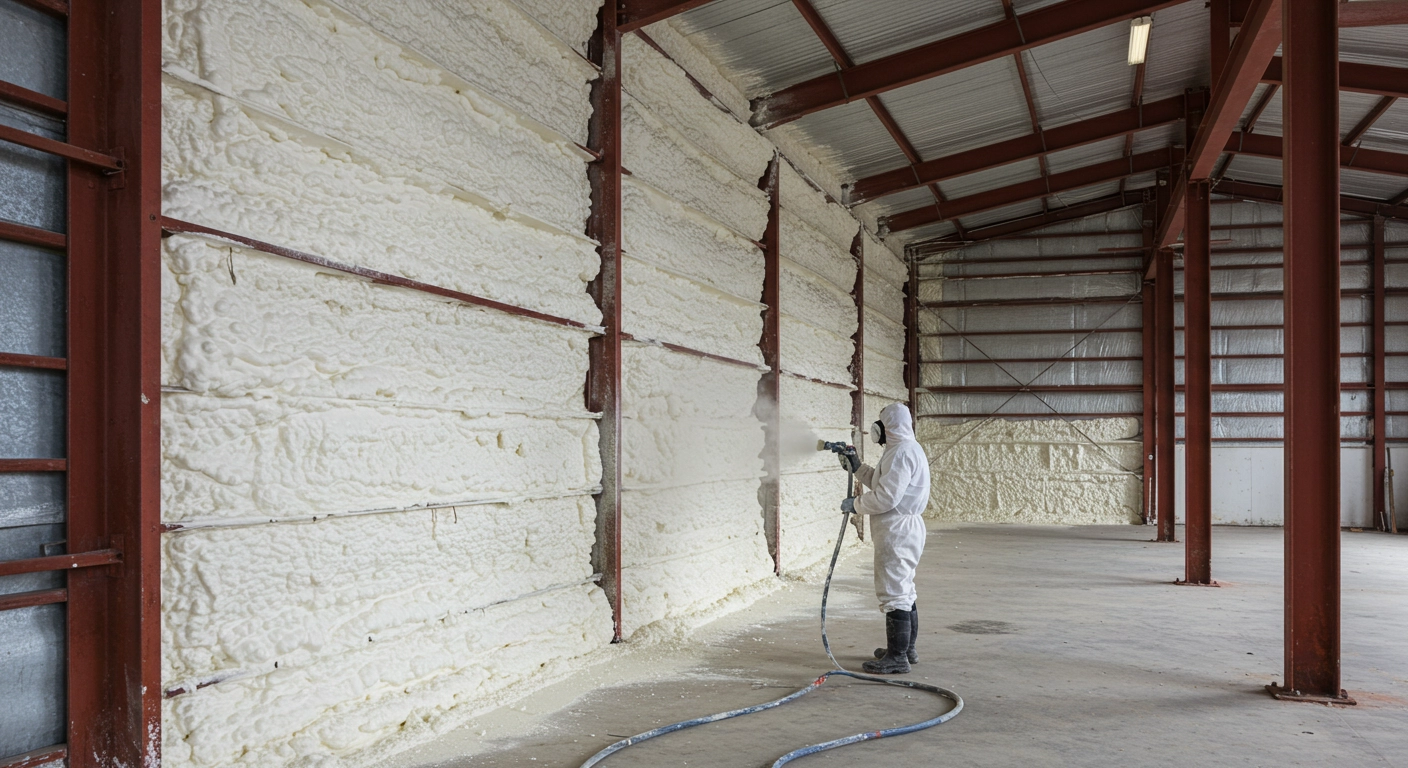
Insulation directly affects energy consumption, interior comfort, and operational efficiency in commercial buildings. Proper insulation reduces the demand for heating and cooling systems, leading to lower utility costs and fewer greenhouse gas emissions. Closed-cell and spray foam systems also contribute to moisture control and structural reinforcement, extending building life cycles and reducing material waste over time.
Commercial sustainability depends on systems that maintain performance under variable load conditions. Insulation acts as a passive control layer, maintaining thermal consistency regardless of external temperature shifts. For businesses looking to enhance energy efficiency and meet compliance standards, investing in spray foam insulation in Leander, TX, can be a strategic choice. This makes it a critical element for energy benchmarking, LEED certification, and compliance with regional building codes.
Poorly insulated buildings lose up to 40% of their energy through roofs, walls, and foundations. High-performance insulation systems lower HVAC usage by maintaining interior temperatures more consistently.
Bonus Tip: Buildings with spray foam roofing require fewer mechanical fixes over time due to sealed gaps and reduced thermal drift.
Reduced energy use means reduced emissions. Spray foam and closed-cell systems often include recycled content and are inert post-installation, meaning fewer off-gassing or VOC emissions.
| Insulation Type | R-Value per Inch | Moisture Resistance | Application Method | Typical Use Case |
|---|---|---|---|---|
| Open-Cell Spray Foam | 3.5 | Low | Spray Applied | Interior partitions, sound dampening |
| Closed-Cell Spray Foam | 6.5 | High | Spray Applied | Exterior walls, roofing, cold storage |
| Blown-In Insulation | 2.5 – 3.7 | Moderate | Loose Fill Blown | Attics, retrofits, wall cavities |
| Rigid Foam Board | 5.0 – 6.0 | High | Panel Installation | Foundations, exterior sheathing |
| Parameter | Closed-Cell Foam | Open-Cell Foam | Blown-In Fiberglass | Rigid Foam Board |
|---|---|---|---|---|
| R-Value (per inch) | 6.5 | 3.5 | 2.5 – 3.7 | 5.0 – 6.0 |
| Air Barrier Capability | Yes | Partial | No | Yes |
| Water Absorption | <2% | >20% | ~5% | <3% |
| Structural Enhancement | Yes | No | No | Some |
| Installation Time (avg.) | 1–2 days | 1–2 days | 1 day | 2–3 days |
Sources: Department of Energy (2024), International Energy Agency (2023)

Indiana’s humid continental climate introduces broad seasonal swings, from sub-zero winters to hot, damp summers. This demands insulation systems that resist condensation, air intrusion, and thermal drift. Closed-cell spray foam, with its high R-value and vapor barrier properties, performs well under these conditions.
Bonus Tip: In regions with frequent freeze-thaw cycles, avoid moisture-absorbing materials like open-cell foam in exterior applications.
Yes, once cured, both open- and closed-cell foams are inert and low-emission.
Closed-cell and spray foam systems can last over 30 years with minimal degradation.
Some types, like blown-in fiberglass, can be applied with minimal disruption.
For large buildings, blown-in or hybrid systems often deliver good ROI when balanced against labor and material costs.
To explore solutions that match your building’s usage, layout, and energy goals, connect with a certified installer.
Spray Foam Tech provides insulation systems designed for long-term commercial sustainability.
Phone: (765) 553-4636 Email: sales@spraytechkokomo.com
R-30 to R-38 is generally required, depending on roof type and local amendments to the energy code.
By reducing thermal transfer, insulation lowers system runtime and cycling frequency, reducing wear and energy use.
Most older materials aren’t recyclable and may require disposal based on local environmental regulations.
Infrared thermography and blower door testing are standard tools to identify weak points or insufficient coverage.
Typically 3–7 years, depending on energy rates, building type, and insulation system chosen.